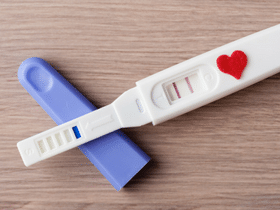What is stress incontinence?
Stress incontinence occurs when a sudden action, such as a sneeze or a cough, causes a small urine leak. Other movements that can cause stress incontinence include physical activities, such as jogging, heavy lifting, or working outside.
Stress incontinence is not the same as urge incontinence. With urge incontinence, there is usually a desire or urge to urinate. The bladder muscle contracts too soon, leading to the release of urine before you’ve made it to the toilet.
Find Out More About Urge Incontience In This Article.
With stress incontinence, you might not feel an urge to urinate before the leak occurs. Contrary to how it sounds, stress incontinence is not related to a stressful lifestyle.
It can, however, lead to stress, frustration, or embarrassment.
You might worry about having an accident, and avoid certain activities or isolate yourself as a result.
Fortunately, there are treatment options available. With treatment, you should be able to manage symptoms and improve confidence.
What are the symptoms?
The main symptom of stress incontinence is urine leakage. The leak can be as little as a drop and as much as a stream of urine.
You might experience incontinence during the following actions:
- Coughing
- Sneezing
- Laughing
- Standing up
- Getting out of a car
- Lifting a heavy object
- Exercising
- Having sex
You might not experience a leak each time you do one of the things on the list above. However, any activity that results in an increase of pressure on your bladder can leave you susceptible to an unintended leak. You might also find that having a full bladder makes a leak more likely.
You should contact your doctor if you find that urinary incontinence is getting in the way of your everyday activities, such as your work, pastimes, activity level, or social life.
What causes stress incontinence?

Stress incontinence can occur for a variety of reasons. Weak muscles are among the most common causes.
The pelvic floor muscles, which support the bladder, and the urinary sphincter, which controls the release of urine from the bladder, tend to weaken over time.
The bladder is an elastic pouch that stretches as it fills with urine. The urethra is the tube that carries urine away from the bladder and out of your body.
The urethra typically stays closed at the urinary sphincter while the bladder fills with urine. This prevents urine from leaking out before you make it to the bathroom.
When it’s time to urinate, the urinary sphincter relaxes, releasing urine into the urethra and out of the body.
The muscles that control this process can weaken over time. If additional pressure is placed on the pelvic floor muscles—because you’ve sneezed, coughed, or laughed, for example—it may be enough to push open the urinary sphincter.
This results in the involuntary release of urine.
Weakness in the pelvic floor muscles and/or urinary sphincter is often caused by physical changes in the body, such as:
- Pregnancy and childbirth.
Among women, pregnancy and childbirth can damage the pelvic floor muscles and/or urinary sphincter. In some cases, stress incontinence appears immediately after delivery. In other cases, it appears years later.
- Prostate surgery.
Prostate surgery is a treatment for prostate cancer. Men who have undergone surgery to remove the prostate gland are more likely to experience stress incontinence.
This is because the urinary sphincter is located below the prostate gland, and removing the prostate can sometimes weaken the sphincter.
- Pelvic surgery.
Among women, hysterectomies, and men, prostate surgery.
Additional factors can make stress incontinence worse.
These include:
- Obesity
- Playing high-impact sports over a long period of time
- Smoking, which can cause chronic coughing
- Other illnesses that cause chronic coughing and/or sneezing
Who is at risk?

Certain factors can increase your risk of developing stress incontinence. These include:
- Age.
Older people are more likely to develop stress incontinence, as muscles tend to weaken over time.
- Having a vaginal birth.
Women who deliver one or more children vaginally are more likely to suffer from stress incontinence than women who’ve delivered via a cesarean section.
- Being overweight or obese.
People who are overweight or obese are at an increased risk of developing stress incontinence.
- Pelvic surgery.
Certain surgeries, including hysterectomies and prostate surgery, can also make you more likely to develop stress incontinence.
What can I do to prevent and treat stress incontinence?

Although you can’t always prevent stress incontinence, you can take action to reduce your risk of developing stress incontinence or treat mild stress incontinence.
Some behavioural therapies and lifestyle changes include:
- Kegel exercises to help strengthen the pelvic floor muscles
- Losing excess weight
- Monitoring your fluid consumption
- Avoiding alcoholic and caffeinated beverages, which can make you urinate more frequently
- Quitting smoking
- Seeking treatment for a chronic cough
- Bladder training to increase the time interval between urination
Other treatments, such as medication and surgery, are available in severe cases. Speak to your doctor to find out how to prevent and treat stress incontinence.
e health-related concerns, you should see your personal physician.
This page is also available in:
![]() English
English


